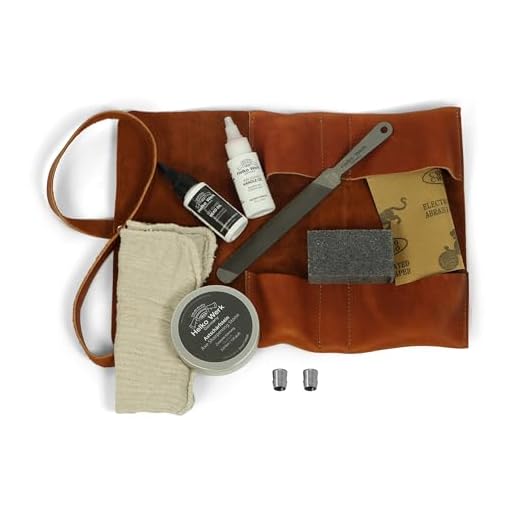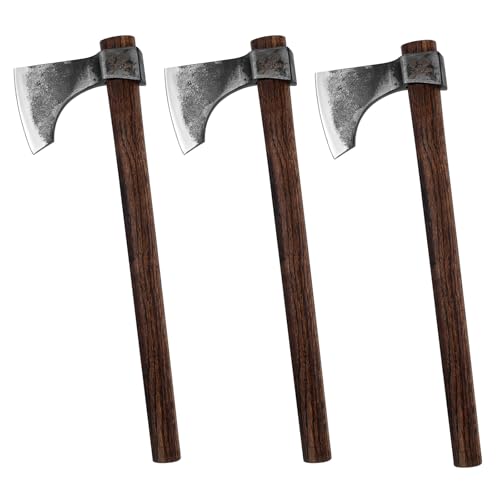




Have you come across an old, rusty axe head that has seen better days? Don’t throw it away just yet! With a little bit of time and effort, you can restore it to its former glory and use it for many more years to come. Cleaning an old axe head requires some elbow grease and a few household items, but the results are well worth it.
Step 1: Remove the Rust
The first step in cleaning an old axe head is to remove the rust. This can be done using a wire brush or sandpaper. For larger areas of rust, a wire brush attached to a drill can make the job easier and faster. Make sure to wear protective gloves and goggles to prevent any injuries.
Step 2: Remove the Dirt and Debris
Once the rust has been removed, it’s time to tackle the dirt and debris that may be stuck to the axe head. Soak the head in a bucket of warm, soapy water for about 15-30 minutes to loosen any remaining grime. Use a scrub brush to gently scrub away the dirt, being careful not to damage the metal surface.
Step 3: Dry and Oil the Axe Head
After the axe head is clean, it’s important to dry it thoroughly to prevent any future rusting. Use a clean and dry cloth to wipe away any excess water. To protect the metal from future rust, apply a thin layer of oil to the entire surface of the axe head. This will help to prevent moisture from causing any damage.
Remember, restoring an old axe head takes time and effort, but the end result is a beautifully restored tool that can be used for many more years. So don’t give up on that rusty old axe head – with a little TLC, it will be as good as new!
Preparing for cleaning
Before you start cleaning an old axe head, it is important to prepare the necessary tools and materials. Here are the steps to follow:
Gather your materials
First, gather all the materials you will need for cleaning the old axe head. This includes:
- A bucket of water
- Steel wool or a wire brush
- Vinegar or rust remover
- Paper towels or rags
- A stiff bristle brush
- A protective coating such as oil or wax
Choose a well-ventilated work area
Next, find a well-ventilated area where you can safely clean the axe head. Cleaning old tools can release dust, rust, and other particles that may be harmful if inhaled. It is best to work outdoors or in a well-ventilated garage.
Ensure safety
Before you start cleaning, make sure to take necessary safety precautions. This includes wearing gloves and safety goggles to protect your hands and eyes from any debris or cleaning agents. It is also important to have good lighting in your work area.
By properly preparing for cleaning, you can ensure that the process goes smoothly and efficiently. Now that you have gathered your materials and set up a suitable work area, you are ready to begin cleaning the old axe head.
Gathering necessary supplies
Before you start cleaning your old axe head, it’s important to gather all the necessary supplies. Having everything prepared beforehand will save you time and ensure a smooth cleaning process. Here’s a list of supplies you’ll need:
- A heavy-duty work glove
- Protective safety glasses or goggles
- A sturdy workbench or table
- A solid container or bucket
- White vinegar or a rust remover solution
- A wire brush or steel wool
- A toothbrush or small scrub brush
- A clean cloth or rag
- Mineral oil or a rust prevention spray
- A small container for the oil or spray
Make sure to choose a well-ventilated area to work in and protect your work surface with newspaper or a drop cloth. It’s also a good idea to have some paper towels on hand for any spills or drips. Once you have all your supplies gathered, you’re ready to move on to the next step of the cleaning process.
Cleaning with vinegar or lemon juice
If you’re looking for a natural and non-toxic way to clean your old axe head, vinegar or lemon juice can be a great option. Both vinegar and lemon juice contain acidic properties that can help remove rust and grime from metal surfaces.
Here are the steps to clean your old axe head using vinegar or lemon juice:
Materials Needed:
- A container large enough to submerge the axe head
- Vinegar or lemon juice
- Water
- Steel wool or a wire brush
- A soft cloth or sponge
Instructions:
- Fill the container with enough vinegar or lemon juice to completely submerge the axe head. If needed, you can dilute the vinegar with water to create a solution.
- Place the axe head in the container, making sure it is fully submerged. Let it soak for at least 24 hours to allow the acidity to work on the rust and grime.
- After soaking, remove the axe head from the container and scrub it with steel wool or a wire brush to remove any remaining rust and dirt. Be sure to scrub all sides of the axe head.
- Rinse the axe head thoroughly with water to remove any vinegar or lemon juice residue.
- Dry the axe head completely with a soft cloth or sponge.
Once the axe head is clean and dry, you can apply a thin coat of oil to prevent further rusting. This can be done using a soft cloth or sponge.
Remember to always take safety precautions when working with sharp tools like an axe head. Wear protective gloves and eyewear if necessary, and work in a well-ventilated area to avoid inhaling any fumes from the vinegar or lemon juice.
Removing remaining rust and polishing
After you have removed most of the rust from the axe head, there may still be some remaining rust and discoloration. To completely remove the remaining rust and restore the shine to the axe head, follow these steps:
- Apply a rust remover or vinegar to the remaining rust spots. Use a brush or steel wool to scrub the affected areas.
- Wipe down the axe head with a clean cloth to remove any rust residue.
- If there are any stubborn rust spots that are difficult to remove, repeat the rust removal process until all the rust has been eliminated.
- Once all the rust has been removed, it’s time to polish the axe head. Apply a metal polish or a mixture of baking soda and water to the axe head.
- Using a clean cloth or a buffing wheel, vigorously rub the polish into the surface of the axe head. Make sure to cover all areas evenly.
- Continue rubbing until you see the desired shine and the axe head looks clean and polished.
- After polishing, wipe down the axe head with a clean, dry cloth to remove any excess polish.
- Inspect the axe head for any remaining rust spots or dull areas. If necessary, repeat the polishing process until you’re happy with the results.
Remember to take your time and be patient during the rust removal and polishing process. With proper care and maintenance, your old axe head can be restored to its former glory.







